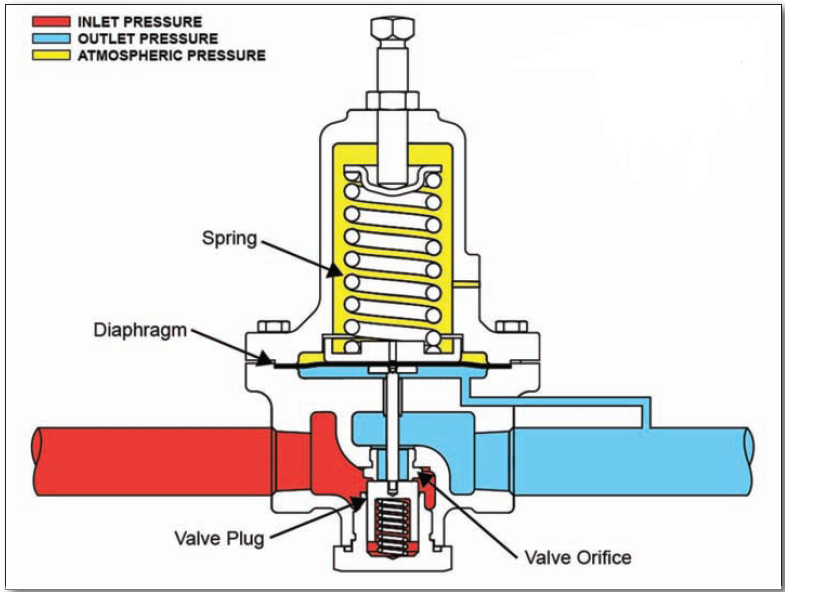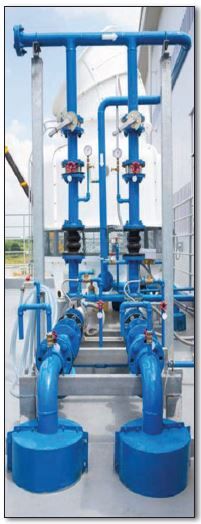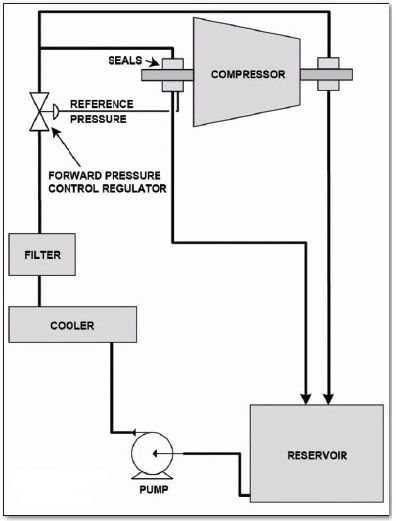Differential Pressure Regulators
RELIABLE CONTROL OF SEALING PRESSURE REDUCES TRIPPING, DOWNTIME AND RISK FOR TURBOMACHINERY SEALING OIL SYSTEMS
In large rotating equipment, such as compressors, turbines and pumps, pressurized oil is used in seals to prevent process fluid leaks and stop lubricating oil from gaining entry. In large turbogenerators, it is common to use sealing oil to minimize hydrogen coolant contamination, thereby reducing the risk of an explosion. Reliable sealing pressure control lowers these safety risks, as well as helping to avoid machine tripping and downtime.
Due to changing operating conditions before and after turbomachinery startup, differential pressure oil systems are the best option as they adjust the sealing oil pressure to changing process conditions. This type of pressure regulator controls fluctuating pressure, maintaining sealing oil pressure above the process fluid pressure or, in the case of turbogenerators, above the hydrogen coolant pressure.
Instant flow corrections
Differential pressure regulators are able to achieve this as they can make immediate flow corrections when they sense a pressure change in the reference fluid pressure. In other words, the pressure regulator can increase or decrease the set point based on process conditions without requiring manual input from an operator or control system.
Differential pressure regulator applications, however, usually have operating conditions outside of what is normally seen in standard pressure regulating operations. This means more variables must be taken into account in the sizing and product selection process.
Standard, self-operated regulators are self-contained valve and actuator combinations that rely on three elements to control pressure downstream (pressure reducing) or upstream (backpressure) of the valve. These are a valve plug and seat to control flow, a diaphragm to measure system pressure, and a spring to load the diaphragm and provide a force balance to create a regulator set point (Figure 1).

Figure 1: The three essential elements of a pressure regulator[/caption]
Differential control regulators operate in much the same way, but with an additional loading pressure added to the top of the diaphragm. This increases force and raises the set point of the unit (Figure 2).

Figure 2: Differential control regulator for both pressure reducing and backpressure service[/caption]
Seal oil in turbomachinery

Figure 3: Seal oil skid with differential pressure regulators[/caption]
It is common to see differential pressure regulation in seal oil systems for centrifugal compressors and pumps (Figure 3). Pressurized oil in the seals keeps process fluid from leaking out of the machine via the shaft. This type of regulator is preferred as it is always sensing the reference pressure coming from the inner seal in order to make immediate flow corrections due to pressure changes in the reference fluid.
The regulator provides a supply of oil at a pressure slightly higher than that of the process fluid inside the machine. There are two main methods: forward and backpressure control. Both are accurate but forward pressure control method is more prevalent. It uses the pressure of the reference gas to increase the set point of the regulator (Figure 4).

Figure 4: Example forward pressure control system[/caption]
For backpressure control, on the other hand, the regulator is placed on the downstream side of the seals, sensing pressure upstream of the regulator coming from the seals. As pressure rises towards set point, the regulator begins to open and allow excess pressure to be relieved downstream, keeping the pressure through the seals constant.
Sizing a differential regulator for seal oil service can be challenging as some manufacturer literature does not include set points as high as the combined spring load plus loading pressure. Differential control adds some challenges when sizing and selecting a pressure regulator. Fluctuating process conditions must be taken into account and can be a source of confusion. However, it is important to take note that the general operating principle of the regulator remains the same.
Overall, differential control can provide benefit in systems like seal oil pressure control. It can give the regulator the ability to increase or decrease the set point based on process conditions, without requiring manual input from an operator or control system.
Written by:

Diarmuid O’Gorman is Marketing Manager Europe at Emerson Process Management, Regulator Technologies, an Emerson business helping businesses automate production, processing and distribution.

Jake Buford is Product Specialist at Emerson Process Management Regulator Technologies.
For more information, visit www.EmersonProcess.com, or contact the authors at jake.buford@emerson.com or diarmuidogorman@emerson.com